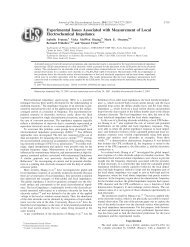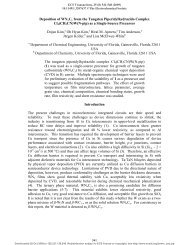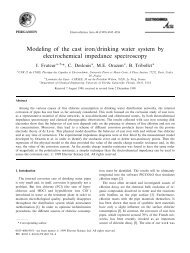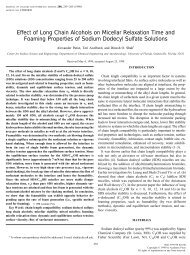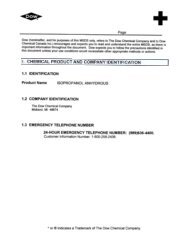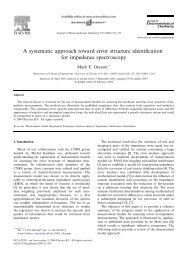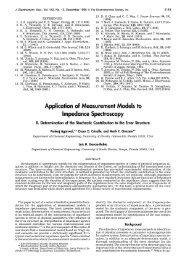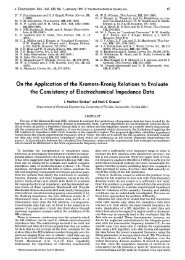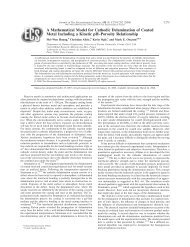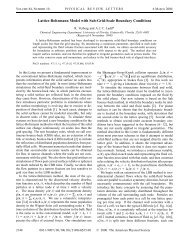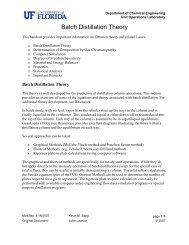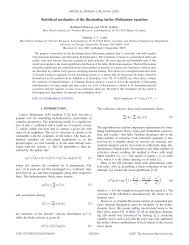Extrusion Introduction An extruder is a common machine in industry ...
Extrusion Introduction An extruder is a common machine in industry ...
Extrusion Introduction An extruder is a common machine in industry ...
Create successful ePaper yourself
Turn your PDF publications into a flip-book with our unique Google optimized e-Paper software.
7. Measure the outer diameter (D o ) of the obta<strong>in</strong>ed tube to obta<strong>in</strong> outer radius (R o ).<br />
8. Calculate the <strong>in</strong>ner diameter (Di) from Eq. (16) to obta<strong>in</strong> <strong>in</strong>ner radius (R i ).<br />
9. Calculate the thickness (θ) from Eq. (17)<br />
10. Repeat several different screw rotat<strong>in</strong>g speeds to f<strong>in</strong><strong>is</strong>h section 1 <strong>in</strong> Table 1. (Choose<br />
at least 5 different screw rotat<strong>in</strong>g speeds.)<br />
11. Plot tube outer and <strong>in</strong>ner radius versus screw rotat<strong>in</strong>g speed and versus theoretical<br />
prediction.<br />
(Note: the diagrams may or may not be l<strong>in</strong>ear.)<br />
Investigation of the Thickness of Tube with Different Take-Off Speeds<br />
1. Fix the screw rotat<strong>in</strong>g speed and <strong>in</strong>ternal pressure (p i ), and adjust the take-off speed<br />
(v t ) to a certa<strong>in</strong> value.<br />
2. Record the pressure gauge of the die section.<br />
3. Refer to the previous section to get the volumetric feed<strong>in</strong>g rate at a specific screw<br />
rotat<strong>in</strong>g speed (rpm).<br />
4. Measure the outer diameter (D o ) of the obta<strong>in</strong>ed tube to obta<strong>in</strong> outer radius (R o ).<br />
5. Calculate the <strong>in</strong>ner diameter (Di) to obta<strong>in</strong> <strong>in</strong>ner radius (R i ) and thickness (θ) from<br />
Eq. (16) and Eq. (17), respectively.<br />
6. Repeat with several different take-off speeds to f<strong>in</strong><strong>is</strong>h section 2 <strong>in</strong> Table 1. (Choose at<br />
least 5 different take-off speeds.)<br />
7. Plot tube outer and <strong>in</strong>ner radius versus take-off speed and versus theoretical<br />
prediction.<br />
(Note: the diagrams may or may not be l<strong>in</strong>ear.)<br />
Investigation of the Thickness of Tube with Different Pressure Differences<br />
1. Fix the screw rotat<strong>in</strong>g speed and take-off speed, and adjust the <strong>in</strong>ternal pressure (p i ) to<br />
a certa<strong>in</strong> value.<br />
2. Record the pressure gauge of the die section.<br />
3. Refer to the previous section to get the volumetric feed<strong>in</strong>g rate at a specific screw<br />
rotat<strong>in</strong>g speed (rpm).<br />
4. Measure the outer diameter (D o ) of the obta<strong>in</strong>ed tube to obta<strong>in</strong> outer radius (R o ).



